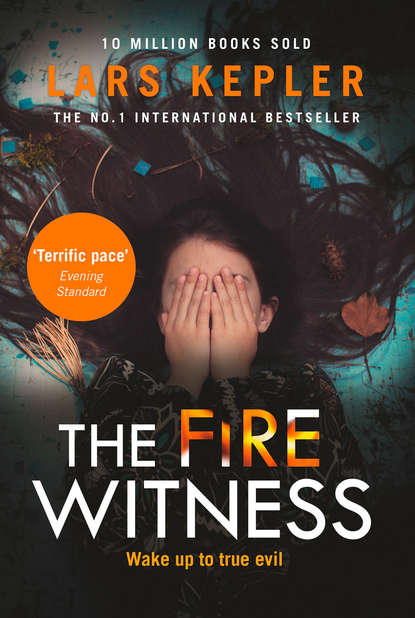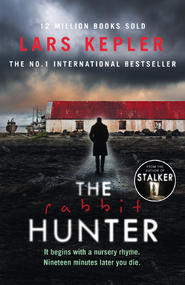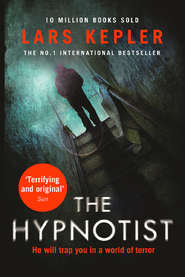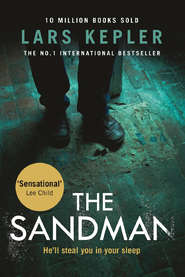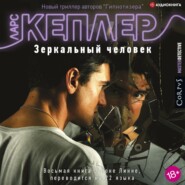По всем вопросам обращайтесь на: info@litportal.ru
(©) 2003-2025.
✖
The Fire Witness
Автор
Год написания книги
2019
Настройки чтения
Размер шрифта
Высота строк
Поля
23 (#ulink_356b57e0-d2bb-577d-936e-39e7c3a81a08)
The forest flickers past, and raindrops patter against the large windscreen. Danish lorry driver Mads Jensen can see a woman standing in the middle of the road two hundred metres away. He swears to himself and blows the horn. He sees her flinch at the noise, but she makes no attempt to get off the road. The driver sounds the horn again, and the woman takes a slow step forward, raises her chin, and looks up at the approaching lorry.
Mads Jensen brakes, and feels the heavy articulated trailer pushing against the old Fliegel cab. He presses the brake pedal harder, the drive-shaft creaks, and the whole vehicle shudders before finally coming to a stop.
The engine winds down, and the rumble from the pistons becomes more audible.
The woman just stands there, three metres from the front of the lorry. Only now does the driver see that she is dressed as a priest under her denim jacket. A small rectangle of her white collar stands out against her black shirt.
The woman’s face is open and remarkably pale. When their eyes meet through the windscreen, tears start to run down her cheeks.
Mads Jensen puts the hazard lights on and gets out of the cab. The engine is radiating heat and a strong smell of diesel. When he walks around to the front of the vehicle the woman is leaning against one of the headlamps, gasping for breath.
‘What’s happened?’ Mads asks.
She looks up at him, wide-eyed. The amber glare of the hazard lights pulses over her.
‘Do you need help?’ he asks.
She nods, and he tries to lead her around the cab. The rain is getting harder, and it’s quickly getting dark.
‘Has someone hurt you?’
She resists, then goes with him and climbs into the passenger seat. He closes the door behind her and hurries around to get in the driver’s seat.
‘I can’t stay here, I’m blocking the whole road,’ he explains. ‘I have to move, is that OK?’
She doesn’t answer, but he sets the truck moving and switches on the windscreen wipers.
‘Are you hurt?’ he asks.
She shakes her head and claps one hand over her mouth.
‘My son,’ she whispers. ‘My …’
‘What are you saying?’ he asks. ‘What’s happened?’
‘She took my son …’
‘I’ll call the police. Is it OK if I call the police?’
‘Oh, God,’ she moans.
24 (#ulink_ebdf43e5-2aa5-5efe-be39-7c9d27220e89)
The rain is beating hard against the windscreen, the wiper blades are moving fast, and the road ahead of them looks as if it’s boiling.
Pia is sitting in the warm cab high above the ground, shaking. She can’t calm down. She realises that she’s not making any sense, but now she can hear the lorry driver talk to the emergency call centre. He is advised to carry on along Highway 86, then the 330, where he’ll meet an emergency vehicle at Timrå that will take her to Sundsvall Hospital.
‘What? What are you talking about?’ Pia asks. ‘This isn’t about me. They have to stop my car, that’s the only thing that matters.’
The Danish driver gives her a confused look, and she realises that she needs to concentrate to make herself understood. She has to act calmly even though the ground has disappeared beneath her, even though she’s in free-fall.
‘My son has been kidnapped,’ she says.
‘She says her son’s been kidnapped,’ the driver repeats into his phone.
‘The police have to stop the car,’ she goes on. ‘A Toyota … a red Toyota Auris. I can’t remember the licence number, but …’
The driver asks the emergency operator to wait.
‘It’s ahead of us on this road … you have to stop it … my son’s only four, he was sitting in the back when I …’
He repeats her words to the operator, explains that he’s driving east along Highway 86, about forty kilometres from Timrå.
‘They have to hurry …’
The truck slows down and passes a bent-over traffic light, and drives across a roundabout. The trailer judders as the wheels roll over the kerb, then the truck accelerates past a white brick building, driving parallel to the river.
The emergency call centre puts the Danish driver through to a female police officer in a patrol car. She introduces herself as Mirja Zlatnek, and says she’s thirty kilometres away, on Highway 330 in Djupängen.
Pia Abrahamsson takes the phone, swallows hard to stifle the nausea she feels. She hears her own voice, calm but shaky.
‘Listen,’ she says. ‘My son’s been kidnapped, and the car is driving along … hang on …’
She turns to the driver.
‘Where are we? What road are we on?’
‘Highway 86,’ the driver says.
‘How much of a head start did they get?’ the police officer asks.
‘I don’t know,’ Pia says. ‘Five minutes, maybe?’
‘Have you passed Indal?’
‘Indal,’ Pia repeats.
‘We’re almost twenty kilometres from there,’ the driver says loudly.
‘Then we’ve got them,’ the police officer says. ‘There are no alternative routes …’
When Pia Abrahamsson hears those words her tears start to flow. She quickly wipes her cheeks and hears the police officer talk to a colleague. They’re going to set up roadblocks on Highway 330 and on the bridge over the river. The second police officer is in Nordansjö, and says he can be in position in less than five minutes.
‘That’s good enough,’ the policewoman says quickly.
The truck drives along the winding road as it follows the river through a sparsely populated part of Medelpad. Even though they can’t see it, they’re following the car with Pia Abrahamsson’s four-year-old son in it: they know it must be ahead of them, because there are no other options. Highway 86 passes through a few isolated communities, but there are no side roads, just forest tracks that don’t connect to other roads, and only lead into the forest, stretching many kilometres through boggy land to logging areas, but no further.





